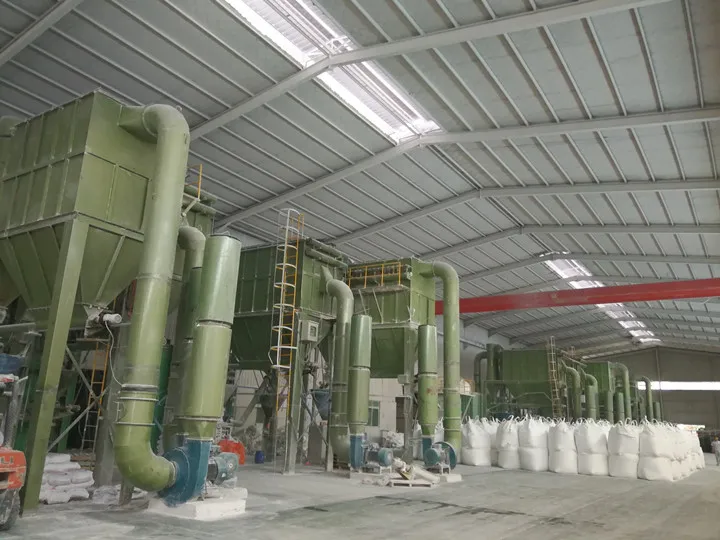Calcium carbonate for rubber and plastics is a widely used additive that enhances the properties of these materials. This versatile mineral boosts the strength and durability of rubber and plastic products. It is a cheap filler that cuts production costs. Also, calcium carbonate can improve these materials. It makes them easier to mold and shape. Its use in automotive parts and household items shows its value in manufacturing. Calcium carbonate is vital. It boosts the performance and sustainability of rubber and plastic products.
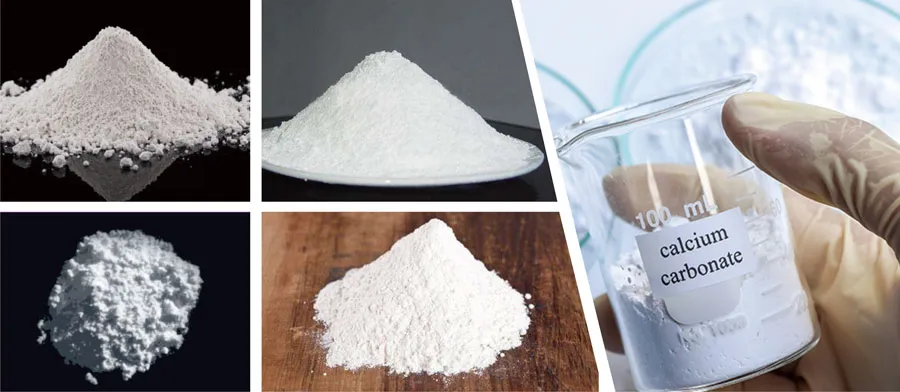
Geometric features
Powder materials are usually used as fillers in the form of particles. The particles are not very regular in shape. For rubber and plastic polymers, the shapes of filler particles greatly affect the filling system’s properties. This includes its physical and mechanical traits. Therefore, the particle shape of the powder materials should be given top priority in use.
For flaky particles, we use the diameter-to-thickness ratio. It is the ratio of the plane size (vertical or horizontal) to the thickness of the particles. For fibrous particles, we often use the aspect ratio. It is the ratio of the length to the diameter of the particles. Calcium carbonate particles are mostly tetrahedral, hexagonal, or polygonal. Some are irregular squares. The shapes greatly affect the fluidity and properties of rubber and plastic products.
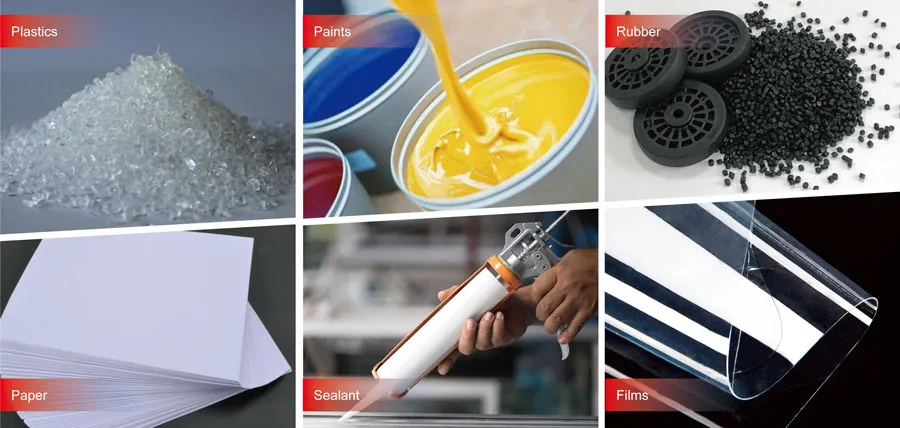
Particle sizes
A key step in filling and modification tech is to disperse the powder particles. They must be evenly mixed into the rubber and plastic polymer matrix, like islands in a sea. This is called an island structure. Smaller particles improve a filling system’s properties if they can be evenly dispersed. But, smaller particles raise processing costs and make uniform dispersion harder. It is very important to know the sizes and distribution of powder particles. Select them based on actual needs. Now, there are many ways to describe the sizes and distribution of powder particles. The rubber and plastic polymer industries use the mesh number method.
There is no unified naming method or regulation for them. That is, the particle sizes are the mesh number of the sieve that can pass the particles. The mesh number from this method refers to the largest 3D size of specified powder particles. Rubber and plastic products need calcium powder with a narrow particle size range. Classify the minimum and maximum particle sizes. Then, collect products within a specific range. This ensures the products’ dispersion, transparency, mechanical properties, and oil absorption rate.
Specific surface area
Different filler particles have different surface roughness. For equal-volume particles, their surface areas depend on their shape and roughness. The sphere has the smallest surface area. The specific surface area is the surface area of fillers per unit mass. It relates to the affinity between the filler and resin. It also depends on the cost and difficulty of the filler treatment.
Surface free energy
The surface free energy of filler particles affects their dispersion in the matrix resin. With a constant surface area, higher surface free energy makes agglomeration easier and dispersion harder. When treating the filler surface, reducing its surface-free energy is one of the main goals.
Density of Calcium Carbonate for Rubber and Plastics
The density of the filler is related to the stacking state of the filler particles. The particles of light calcium carbonate are spindle-shaped. The particles of heavy calcium carbonate are broken stone-shaped. When stacked, there are gaps between the particles. The volume of the former is significantly larger than that of the latter. Thus, light calcium carbonate is less dense than heavy calcium carbonate. But it does not mean that light calcium carbonate is light and heavy calcium carbonate is heavy. Their single-particle densities differ only a little. The former is 2.4-2.7 g/cm³, and the latter is 2.7-2.9 g/cm³. In rubber and plastic polymer filling, the filler density matters. It affects the overall density of the filling system. Also, the fillers’ forms in the polymer matrix matter. Are they agglomerated? Are there gaps between the fillers and the polymer molecules?
Oil absorption value
The oil absorption value is the amount of dioctyl ester (DOP) that a unit mass of filler can absorb. In rubber and plastic polymer products with a plasticizer, a high filler oil absorption value will increase plasticizer use. The filler’s oil absorption value relates to its particle size, distribution, and surface structure. Light calcium carbonate has an oil absorption value several times that of heavy calcium carbonate. To achieve the same plasticizing effect in resin, use heavy calcium carbonate. It can reduce the amount of plasticizer needed. Heavy calcium carbonate normally requires an oil absorption of less than 65mL/100g.
Hardness of Calcium Carbonate for Rubber and Plastics
The hardness of the filler particles has dual natures. High-hardness fillers can improve the wear resistance of rubber and plastic. But, they can also cause serious wear on the processing equipment and molds. This is due to the addition of high-hardness fillers. If the wear is serious, causing a big economic loss, the use of fillers will be affected. Mohs hardness is a relative comparison of abilities to scratch among materials. The Mohs hardness of human fingernails is 2, which can scratch talc, but it is powerless on calcite.
Of course, fillers with different hardness will cause different wear on processing equipment. For a given hardness of the filler, larger particles wear the processing equipment’s metal surface more. After a certain size, it stabilizes.
Also, wear intensity relates to the hardness difference between the two grinding materials. It is generally believed that when the metal strength is 1.25 times higher than the hardness of the abrasive, it is low wear. When the metal strength is 0.8-1.25 times of hardness of the abrasive, it is medium wear. When the metal strength is 0.8 times lower than the hardness of the abrasive, it is high wear. For example, 38CrMoAl alloy steel is the metal used for the barrel and screw of rubber and plastic polymer extruders. After nitriding, its Vickers hardness is 800-900. Heavy calcium is about 140. Using an extruder on rubber and plastic with calcium carbonate causes some wear.
But, it is not very noticeable, at least tolerable. However, the Vickers hardness of fly ash glass beads and quartz sand is above 1000. Rubber and plastic polymers would cause severe wear on nitriding steel. After processing dozens of tons of materials, the screw’s nitride layer would be gone. It is about 0.4mm thick. Nitriding can raise the Vickers hardness of 45 steel to about 2000. A screw, filled with the same glass beads or quartz sand, suffers only slight wear. It’s equivalent to the wear from heavy calcium carbonate on nitrided steel.
Whiteness of Calcium Carbonate for Rubber and Plastics
The filler’s whiteness is vital. It affects the color and look of the filled rubber and plastic products. In general, higher whiteness means less impact on the color of the filled rubber and plastic. It only affects the color’s brightness. There is no completely transparent filler now. So, the filled rubber and plastic polymer are often opaque. If the filler is not white or with other colors, only black or dark rubber and plastic polymer products can be made.
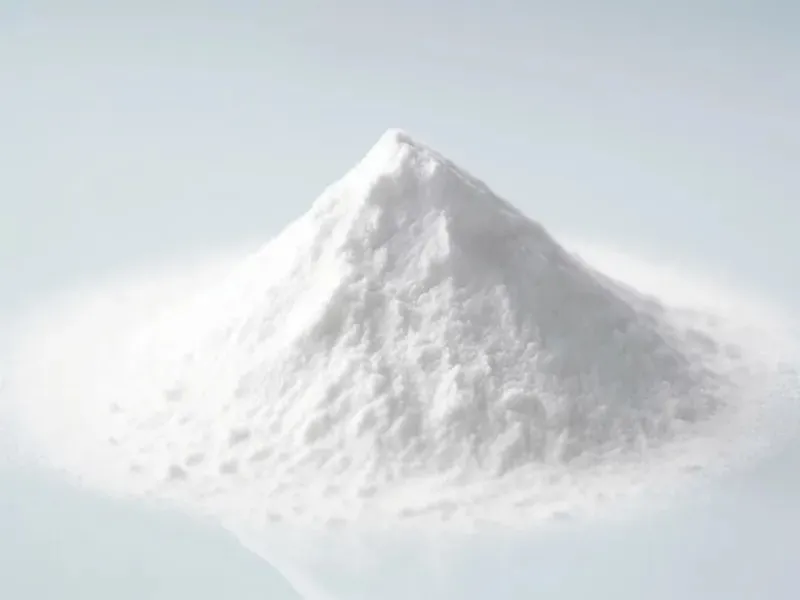
Refractive Index
Rubber and plastic polymers have very different light refractive indices. The refractive index of general rubber and plastic polymer is around 1.50 – 1.60. If the powder filler has a similar refractive index to the rubber or plastic matrix, it will cause low light shielding when added to the base rubber and plastic. If not, filled rubber and plastic polymer have a strong light-shielding effect. For most minerals, they have more than one refractive index.
For example, salt is a typical cubic crystal. Glass is a typical isotropic, non-crystalline, amorphous substance. Crystals like calcite and quartz have two equal minor axes. They are perpendicular to the third (major) axis. When light propagates along the long axis, its propagation speed does not change. However, when light travels in other directions, it splits into two beams. They have different speeds, so there are two refractive indices. The two refractive indices of calcite are 1.658 and 1.486, and the two refractive indices of quartz are 1.553 and 1.554.
Absorption and reflection of light
Ultraviolet light can degrade polymer macromolecules. The wavelength range of ultraviolet light is 0.01~0.4μm. Carbon black and graphite can absorb light in this wavelength range. So, as fillers, they can protect the filled polymer from UV degradation. Some substances can absorb ultraviolet light. They can also convert shorter-wavelength UV light into longer-wavelength visible light by re-emitting it. As a filler, it can block UV rays and boost visible light. Infrared rays are light waves with a wavelength of 0.7μm or more. Some fillers can absorb or reflect light waves in this wavelength range. Filler materials in greenhouse films, like mica and kaolin, can reduce infrared transmittance. These fillers include talcum powder. This will greatly improve the films’ thermal insulation.
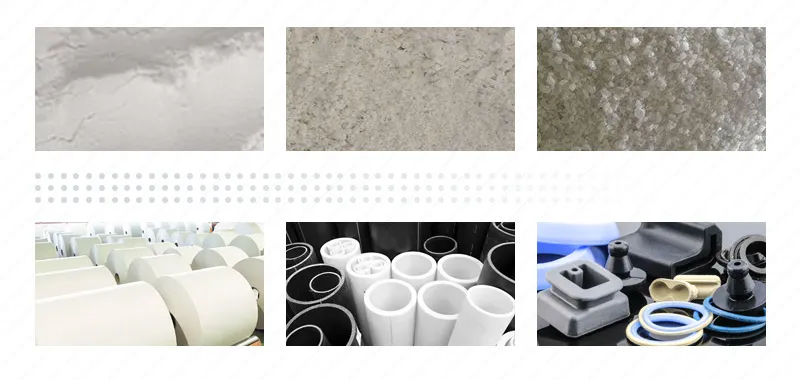
Electrical properties
Metals are excellent electrical conductors. So, using metal powder as a filler can affect the electrical properties of filled rubber and plastic. If the filling amount is small, and the resin wraps each metal particle, the electrical properties will not change suddenly. The filled rubber and plastic will change only when the filler contacts its metal particles. This will significantly reduce the volume resistivity. Mineral fillers are all electrical insulators.
They should not affect the electrical properties of rubber and plastic polymers. The environment will cause a layer of water molecules to condense on the filler particles. The filler’s surface properties affect the water molecules’ bond with it. The bond’s form and strength vary with the surface properties. So, the fillers’ electrical properties in the resin may differ from those of the fillers alone. Also, during crushing and grinding, fillers may build static electricity. This is due to the breaking of valence bonds. Adsorbed aggregates form, especially when producing ultra-fine fillers.
Moisture of Calcium Carbonate for Rubber and Plastics
Calcium carbonate is not easy to absorb water. It has no structural or crystal water. However, in the usual ore work, the powder particles are very small. They absorb moisture easily. Rubber and plastic polymer have a very low moisture requirement. The standard is 0.5% or less. In practice, the moisture content must be ≤ 0.3%. The lower the water content, the less it affects rubber and plastic polymer products.
Characteristics of different calcium carbonate grinding mills
Ball milling and classifying production line for producing calcium carbonate powder
Ball mills often combine with classifiers to form a full production line. It mainly produces D97, 5 to 45μm ground calcium carbonate powder and ultrafine powder. Different models of ball mill host, its output is also different. Generally speaking, the annual output of the ball mill is between 10,000 tons and 200,000 tons.
Its advanced tech and high-quality products have won praise from mid to high-end users. Its stable operation adds to its reputation.
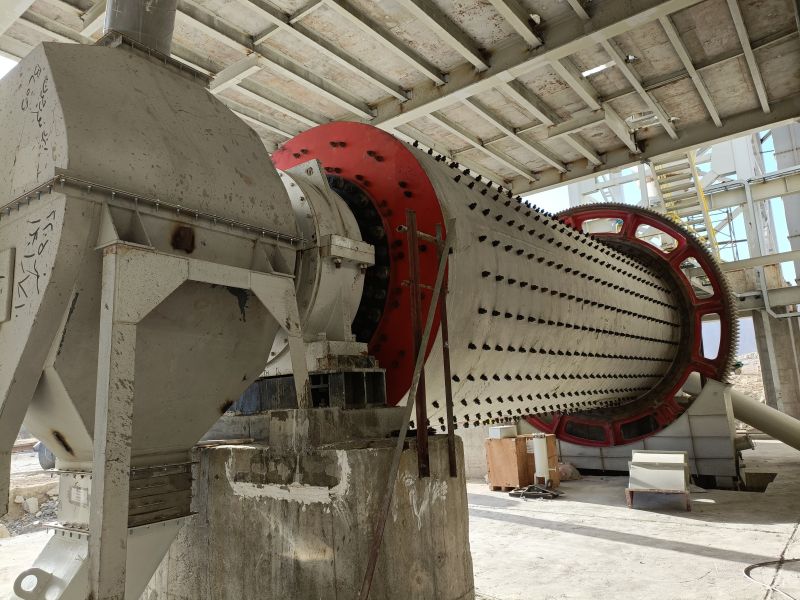
Micro powder roller mill for producing calcium carbonate powder
As the name suggests, the micro powder roller mill crushes materials. It does this by rolling and grinding with its multi-layer ring rollers. It is mainly used to produce ultrafine powder of 8-45μm.
Our common micro powder roller mill models have 21 rollers, 28 rollers, and 34 rollers. The greater the number of grinding rollers, the greater the output.
